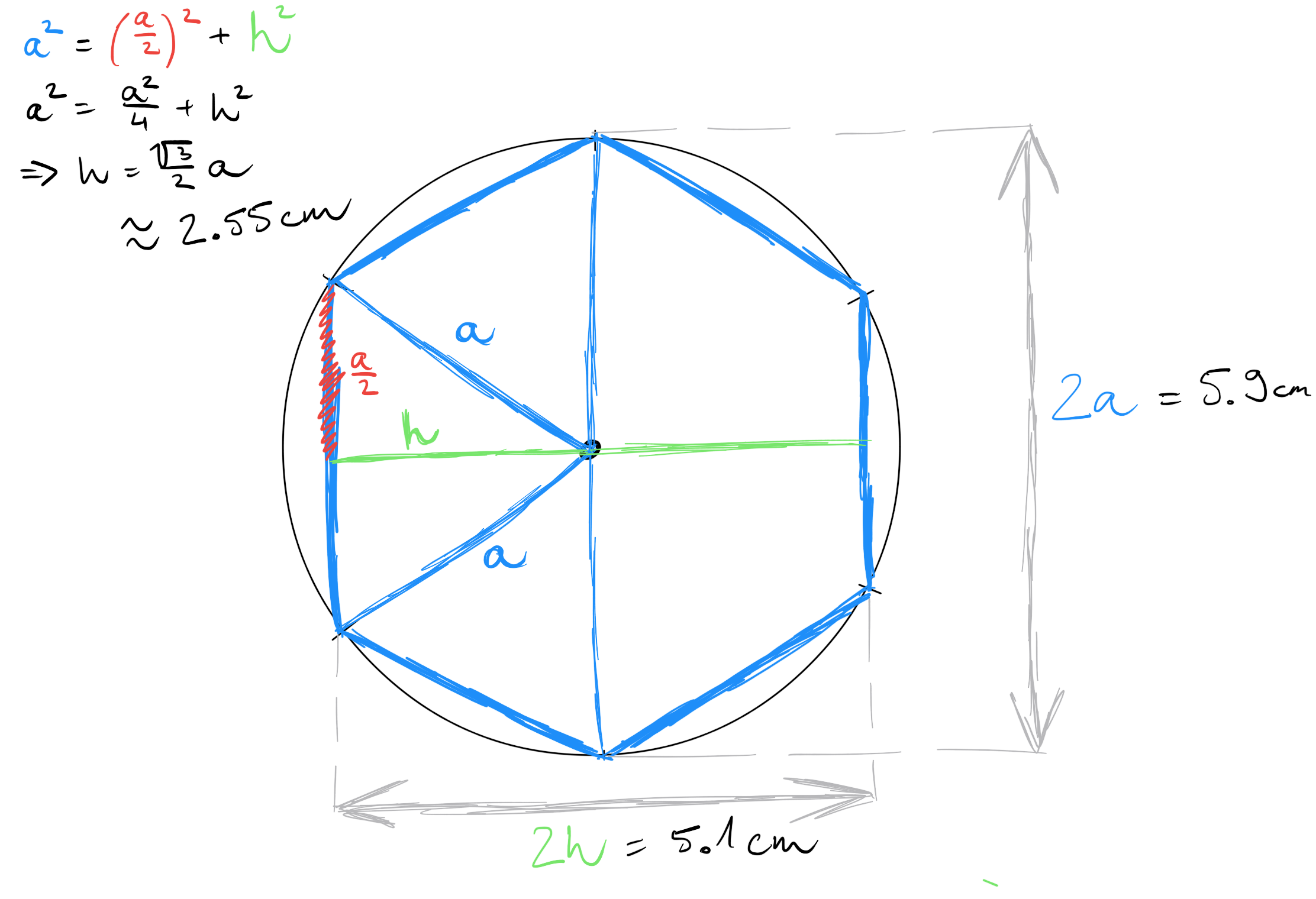Why kitchen tile retailers are lying to you
One of the fun things about being an adult is that you get to pick kitchen tiles once in a while.
And when I say fun, I mean it’s no fun at all.
So why not make it fun?
Lujza loves bees and everything bee-related, and so for our tiling, we decided to go with a hexagonal mosaic. A single tile looks something like this:
Hexagonal tiling. Or a kitchen mosaic.
This is where the fun started for me, since we had to determine how many of these tiles we needed to buy. (They are not so cheap!) The section of the wall to be tiled is about 2.6 ㎡. Adding a reserve of 10%, we get 2.86 ㎡ – let’s round that off to 2.9 ㎡.
Great! Now we just need to divide by the area of a single tile (the 30 little hexagons) and we’re done. So how much is that?
According to the seller’s website, a pack of 11 tiles is enough for 0.85 ㎡. This means that we need 2.9 ㎡ / 0.85 ㎡ * 11 ≈ 38 tiles.
I was (rightly) sceptical about how they got the number 0.85 ㎡, and so I’ve decided to compute the area myself. Fortunately, the seller specified the dimensions of a single hexagon, albeit in a weird way: instead of specifying the side length, they give dimensions of the bounding box, which is 5.9 ㎝ x 5.1 ㎝. They also specify the dimensions of the whole tile, which is 27 ㎝ x 28.5 ㎝.

From there, it’s easy to see that the area of a side is $a$ = 5.9 ㎝ / 2 = 2.95 ㎝. Now we can work out the area of a hexagon, which is $A_{\text{hex}} = 3/2\sqrt{3}a^2$ = 22.61 ㎠ = 0.002261 ㎡.
Remember, this is for a single hexagon. A tile has 30 of those, its area is therefore $A_{\text{tile}} = 30 A_{\text{hex}}$ = 0.06783 ㎡. Using that, we compute that we need 2.9 ㎡ / 0.06783 ㎡ ≈ 43 tiles.
In fact, 38 tiles would only cover 2.58 ㎡.
So where did the difference come from? You guessed right: the retailer computed the area using 0.27 m x 0.285 m = 0.07695 ㎡, which is ≈ 0.85 ㎡ for 11 tiles. This is obviously wrong – it includes the empty space around hexagons!
I wonder how many people did not buy enough tiles because of this? 😅